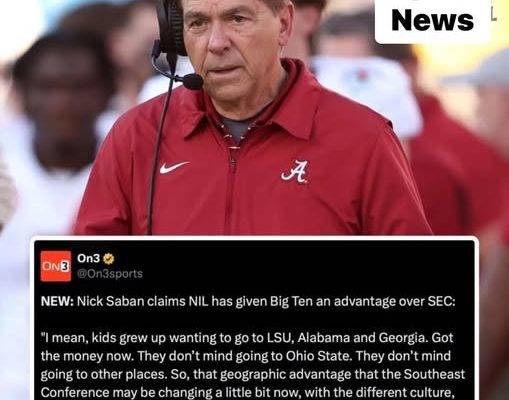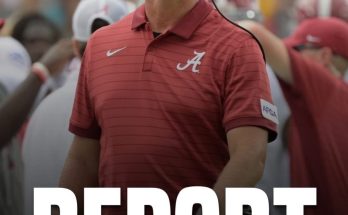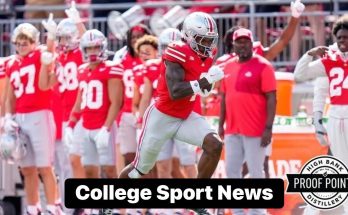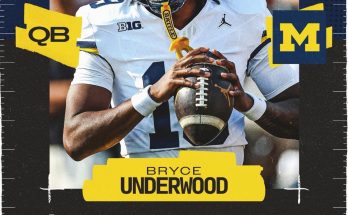Nick Saban has never been one to shy away from sharing his opinions on the changing landscape of college football, and once again his perspective has ignited conversation across the sport. This time, the legendary former Alabama head coach has set his sights on the impact of Name, Image, and Likeness, better known as NIL, and how it has shifted the balance of power in a way that he feels gives the Big Ten an unfair advantage over the SEC. For years, Saban was at the center of the Southeastern Conference’s dominance, building Alabama into a dynasty that was often viewed as the gold standard of college football. Yet even he acknowledges that the arrival of NIL has rewritten the rules, creating a system where financial muscle and market size play just as much of a role as recruiting ability and on-field performance.
Saban’s comments stem from the way NIL opportunities have aligned with geography and conference structure. The Big Ten’s footprint spans across some of the most populated, corporate-heavy regions in the country. Universities like Ohio State, Michigan, Penn State, and USC are situated in major markets or connected to vast alumni bases that reach across the nation. That positioning makes them particularly appealing to brands and donors who can funnel significant money into NIL collectives. By contrast, many SEC schools, while historically dominant in football, are located in smaller markets with fewer major corporate sponsors. This, Saban argues, puts his former conference at a structural disadvantage, especially in a time when recruiting battles are directly influenced by the potential NIL earnings that players can access the moment they step on campus.
The idea that NIL has tilted the scales toward the Big Ten is not just about perception but tied to measurable outcomes in recruiting trends. Over the past few years, the Big Ten has made noticeable strides in attracting top-ranked players who previously may have gravitated toward the SEC almost automatically. While the SEC still produces powerhouse classes—Georgia, Alabama, and LSU remain magnets for elite talent—the Big Ten has closed the gap in a way that was nearly unthinkable a decade ago. Ohio State has become a juggernaut in the NIL era, with reports suggesting that their collective support rivals or even surpasses that of most SEC programs. Michigan, fresh off a national title, has also embraced NIL opportunities, using its massive alumni network to keep its roster stocked with high-level recruits and retain players who might otherwise declare early for the NFL draft.
Saban’s concern also points to the cultural difference between the conferences. For decades, SEC success was built on recruiting dominance, high-octane atmospheres, and the perception that the South simply cared more about college football than the rest of the country. This passion translated into sold-out stadiums, thriving booster networks, and a kind of gravitational pull that brought talent into the SEC pipeline year after year. NIL, however, has changed the way loyalty and passion are expressed. In the past, boosters might donate to facilities or coaching salaries, indirectly supporting the program’s growth. Now, those same donors are channeling their money into NIL deals for individual athletes, and in wealthier or more corporate-heavy regions, that money stretches a lot further.
The Big Ten’s recent expansion also factors into Saban’s perspective. By adding USC, UCLA, Oregon, and Washington, the conference not only gained national exposure but also secured access to some of the most lucrative media markets in the country. Los Angeles alone is a sponsorship hub, and the presence of USC and UCLA ensures that NIL collectives tied to those programs will be flush with opportunities. Pair that with Nike’s close relationship with Oregon and the Seattle corporate presence that benefits Washington, and the Big Ten suddenly has an NIL infrastructure that rivals or exceeds what any single SEC school can offer. For Saban, this represents a fundamental shift: the Big Ten no longer has to catch up to the SEC in terms of football credibility; instead, the NIL environment has handed them a structural edge that is hard to counter through traditional recruiting or coaching.
From Saban’s vantage point, this creates inequities that the sport’s governing bodies have not addressed. NIL was meant to empower athletes, giving them a chance to earn from their talents and marketability. Few argue against that principle, and even Saban has stated that players deserve to profit from their contributions to a billion-dollar industry. But what troubles him is the uneven playing field. Without standardized rules or a national governing system, NIL operates as a free-for-all where schools in wealthy regions thrive and schools in smaller markets fall behind. It is not just about the amount of money available but also about the consistency with which programs can promise long-term NIL stability. Recruits and their families, understandably, want assurances that their potential earnings will be sustained throughout their college careers, and the Big Ten’s deep well of alumni and corporate backers makes that promise easier to keep.
Critics of Saban’s remarks argue that the SEC is hardly a victim in the NIL era. Programs like Texas A&M, which reportedly spent enormous sums on its 2022 recruiting class through NIL, and schools like Texas and Oklahoma, which are joining the SEC, bring massive resources and alumni networks that rival anyone in the Big Ten. Georgia, fresh off back-to-back national titles, continues to recruit at an elite level without showing any signs of slowing down. Alabama itself, even as Saban retired, remained a top recruiter, consistently finishing in the top five nationally. Detractors see Saban’s comments as an attempt to protect the SEC’s long-standing dominance and perhaps a way to signal to boosters and administrators that the conference must evolve even further to stay on top.
Still, there is an underlying truth in his critique. Market size and corporate presence do matter, and NIL has amplified that reality in ways college football had never previously experienced. Before, a recruit might choose Alabama over Michigan because of the chance to compete for national titles and enter the NFL pipeline that Saban perfected. Now, that same recruit might weigh the immediate financial incentives of an NIL package in Columbus or Ann Arbor more heavily, knowing that long-term earnings can offset the difference in championship odds. That calculation doesn’t erase Alabama or Georgia’s allure, but it does narrow the gap and opens the door for the Big Ten to win more recruiting battles than in the past.
The broader implications of Saban’s comments extend beyond the SEC and Big Ten rivalry. College football as a whole is grappling with how to regulate NIL without infringing on athletes’ rights. Some propose revenue-sharing models tied to television deals, while others advocate for a uniform system of contracts that would prevent under-the-table bidding wars. Saban has often suggested that NIL should be tied to performance or managed centrally to avoid the perception that college football has become professionalized free agency. His stance reflects a fear that the sport is moving away from its roots, where tradition, development, and loyalty were the core selling points, toward a marketplace defined almost exclusively by financial leverage.
One cannot overlook the irony in Saban’s concerns. For years, his Alabama teams were accused by rivals of having structural advantages that made it nearly impossible for others to compete. Whether it was facilities, coaching staff size, or sheer recruiting momentum, Alabama under Saban represented the pinnacle of a college football arms race. Now, with NIL shifting those dynamics, the same arguments about unfairness are being raised from the other side. This doesn’t necessarily invalidate his points, but it does highlight how quickly perceptions of fairness can change when the balance of power is disrupted.
For fans, Saban’s critique fuels one of the most compelling debates in modern college football. Is NIL truly creating an uneven playing field, or is it simply redistributing advantages that the SEC once monopolized? The Big Ten has long sought to close the gap with the SEC in terms of national titles and perception, and NIL may have given them the final tool needed to level the field. On the other hand, the SEC remains stacked with powerhouse programs, elite coaches, and the kind of deep-rooted culture that ensures its schools will remain relevant no matter the financial landscape. The truth likely lies somewhere in between, with NIL adding new wrinkles but not completely rewriting the hierarchy.
Saban’s comments also serve as a call to action for the SEC. The conference is not short on resources; it remains the most profitable in college football and has expanded to include Texas and Oklahoma, two programs with enormous potential in the NIL marketplace. If the Big Ten is setting the pace with its corporate-backed collectives, the SEC will almost certainly respond with innovation of its own. What Saban seems to want is a recognition that unless the system is standardized, the sport risks becoming a bidding war that alienates fans and undermines competitive balance.
As college football moves further into the NIL era, the sport’s stakeholders will continue to wrestle with these questions. Should there be salary caps or limits on NIL collectives? Should the NCAA or conferences create oversight bodies to ensure fair play? Or should the marketplace dictate outcomes, even if that means certain programs pull ahead because of geography and corporate ties? For Saban, the answer is clear: the current system has handed the Big Ten an edge that goes beyond what he believes is healthy for the sport. Whether others agree with him or not, his words carry weight, and they ensure that NIL and its impact will remain at the center of the college football conversation for years to come.
Ultimately, Saban’s perspective is both a reflection of his competitive nature and a recognition of how much the game has evolved. He spent his career mastering every edge available, and now he sees one forming outside the SEC’s control. His critique is not a dismissal of NIL’s value but a warning that without oversight, college football risks becoming defined more by corporate sponsorship than by tradition and competitive balance. For fans of the SEC, it is a reminder that even the greatest dynasties must adapt, and for fans of the Big Ten, it is validation that their conference is poised to challenge the throne in ways that once seemed impossible. Either way, the debate that Saban has reignited ensures that the NIL era will be as complex, controversial, and captivating as any chapter in the sport’s history.



